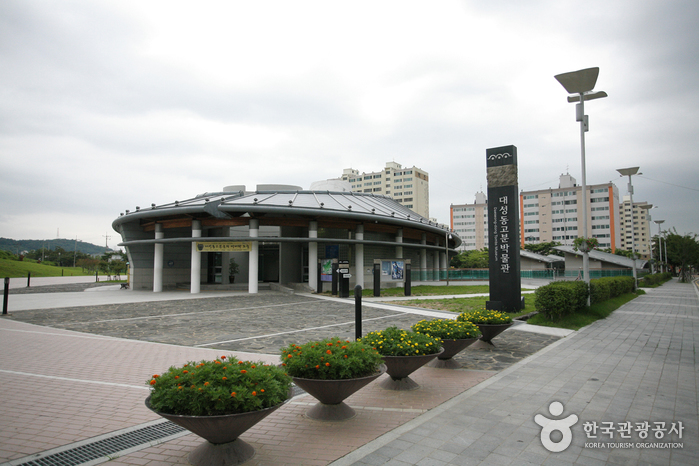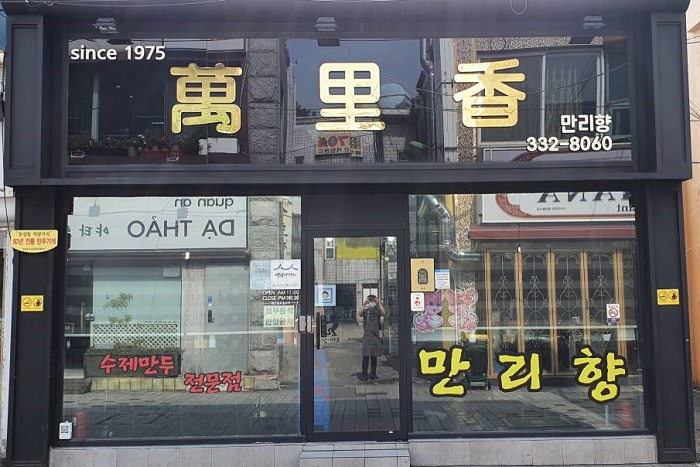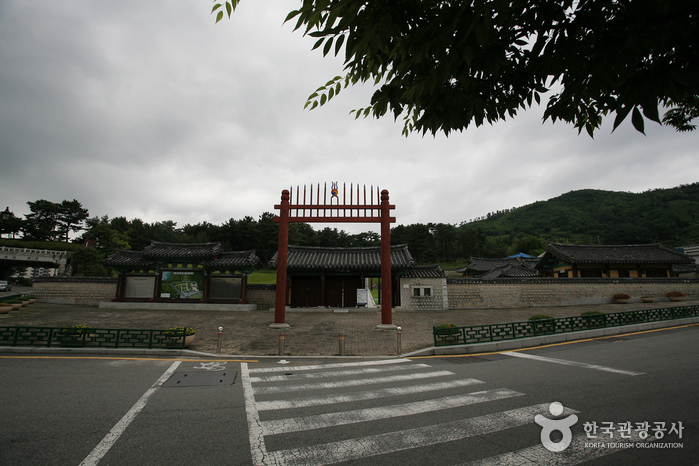Tomb of King Suro (수로왕릉)
471.5M 2024-01-23
26 Garak-ro 93beon-gil, Gimhae-si, Gyeongsangnam-do
+82-55-332-1094
King Suro founded the Garak Kingdom in AD 42 and married Heo Hwang-ok, a princess from the Indian country of Ayuta, in AD 48. He was the founder of the Gimhae Kim family. Heo Yeop, a Yeongnam governor, gave the tomb its current look in the 13th year of the reign of King Seonjo (1580). The tomb compound includes various buildings, including the Sungseonjeon (where the ancestral tablets of King Suro and his queen are kept), Anhyanggak, Jeonsacheong, and Jegigo, as well as stone structures, such as a sindobi (tombstone) and gongjeokbi (monument established to pay homage the deceased). The tombstone in front of the royal tomb was built in the 25th year of the reign of King Injo (1647) of the Joseon dynasty. The name Sungseonjeon was bestowed on the tomb by King Gojong in the 21st year of his reign (1884).
Museum of the ancient tombs in Daseong-dong (대성동고분박물관)
581.2M 2023-01-02
126, Gayaui-gil, Gimhae-si, Gyeongsangnam-do
+82-55-350-0401
The Museum of the ancient tombs in Daseong-dong displays artifacts unearthed from the four excavations of the Daeseongdong Tumuli. Highlighting often overlooked relics of the Geumgwan Gaya, the museum has three ground-floor exhibit halls and several underground auxiliary facilities. The main exhibits include a life-sized statue of a mounted soldier and a warrior statue, both recreated based on bones excavated from the tumuli of Yean-ri. The museum relies heavily on videos and dioramas to help visitors explore all the museum has to offer.
Ancient Tombs in Daeseong-dong, Gimhae (김해 대성동 고분군)
717.8M 2020-04-02
126, Gayaui-gil, Gimhae-si, Gyeongsangnam-do
+82-55-330-3934
The tumuli in Daeseong-dong, located to the east of the Royal Tomb of Kim Suro, reflect the formation and development of the Gaya Era. The Daeseong-dong Tumuli are located in the center of the shell mounds of Hoehyeon-ri, the location of the founding of the Gaya Kingdom according to local legend.
The tumuli relics were excavated by researchers from the Kyungsung University Museum from 1990 to 1992 and were found to be the common burial ground of the dominant class of the Gaya Kingdom. On the hilltops, which were viewed as prime burial places, are the tombs of kings and rulers; on the slopes are the tombs of the lower classes.
A total of 136 tumuli were found in the Daesong-dong area. Further investigation of the tumuli revealed several important and interesting facts. First, from the end of the third century, men and horses were buried alive along with the dead. Also, weapons were bent and buried as well, with many of these artifacts being unearthed among the tumuli. Other materials found in the tumuli such as cylindrical bronze items, pinwheel-shaped bronze items, and jasper items showed that Gaya was involved in trade with Japan. The Daeseong-dong Tumuli is significant in that it gives a glimpse into the political and social structure of the Gaya Kingdom, and the cultural exchange between Korea, China, and Japan.
Mallihyang (만리향)
762.9M 2021-03-20
4, Bunseong-ro, 335beon-gil, Gimhae-si, Gyeongsangnam-do
+82-55-332-8060
A store featured in famous Korean gourmet programs with 45 years’ tradition. This restaurant's signature menu is steamed dumpling. This Korean dishes restaurant is located in Gimhae-si, Gyeongsangnam-do.
Topten - ISQUARE Mall Branch [Tax Refund Shop] (탑텐 김해아이스퀘어)
938.6M 2024-04-18
I Square Mall West Block, 2342, Gimhae-daero, Gimhae-si, Gyeongsangnam-do
-
Artbox - ISQUARE Mall Branch [Tax Refund Shop] (아트박스 김해아이스퀘어)
938.6M 2024-04-18
2342, Gimhae-daero, Gimhae-si, Gyeongsangnam-do
-
Mh Modern House - Homeplus Gimhae Branch [Tax Refund Shop] (MH 모던하우스 홈플러스김해)
1.3Km 2024-04-23
2078, Gimhae-daero, Gimhae-si, Gyeongsangnam-do
-
Homeplus - Gimhae Branch [Tax Refund Shop] (홈플러스 김해)
1.3Km 2024-04-18
2078, Gimhae-daero, Gimhae-si, Gyeongsangnam-do
-
Olive Young - Homeplus Gimhae Branch [Tax Refund Shop] (올리브영 홈플러스김해점)
1.3Km 2024-06-27
2F, 2078, Gimhae-daero, Gimhae-si, Gyeongsangnam-do
-
Tomb of Queen Consort of King Suro (김해 수로왕비릉)
1.3Km 2020-04-04
1, Garak-ro 190beon-gil, Gimhae-si, Gyeongsangnam-do
+82-55-338-1330
Tomb of Queen Consort of King Suro in Gusan-dong, Gimhae is the final resting place of Queen Heo, the Queen Consort of King Suro, the founder of Garak. The tomb dates all the way back to the Gaya dynasty and has been officially designated as Historic Site No. 74. Unlike many other ancient tomb mounds that are raised on flat land, Queen Heo's mound sits high upon a hill. In front of the tomb is Pasa Stone Pagoda, which its stones are known to have come from India.
Together with the Tomb of King Suro, the tomb preservation area was expanded in the 28th year of King Sejong’s reign (1446). Records indicate that the tombs were robbed over a century later during the Imjin War (1592-1598). The current headstone and plaque by the tomb was installed in the Joseon dynasty in the 25th year of King Injo's reign (1641).



![Topten - ISQUARE Mall Branch [Tax Refund Shop] (탑텐 김해아이스퀘어)](http://tong.visitkorea.or.kr/cms/resource/43/2885943_image2_1.jpg)
![Artbox - ISQUARE Mall Branch [Tax Refund Shop] (아트박스 김해아이스퀘어)](http://tong.visitkorea.or.kr/cms/resource/47/2885947_image2_1.jpg)
![Mh Modern House - Homeplus Gimhae Branch [Tax Refund Shop] (MH 모던하우스 홈플러스김해)](http://tong.visitkorea.or.kr/cms/resource/56/2885956_image2_1.jpg)
![Homeplus - Gimhae Branch [Tax Refund Shop] (홈플러스 김해)](http://tong.visitkorea.or.kr/cms/resource/59/2885959_image2_1.jpg)

 English
English
 한국어
한국어 日本語
日本語 中文(简体)
中文(简体) Deutsch
Deutsch Français
Français Español
Español Русский
Русский